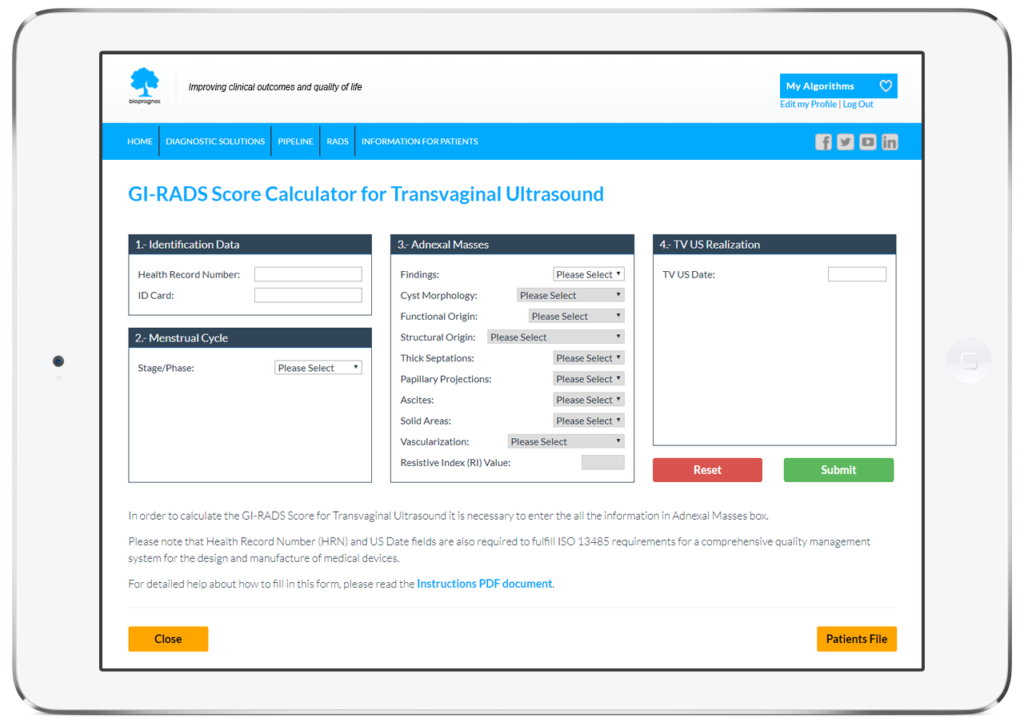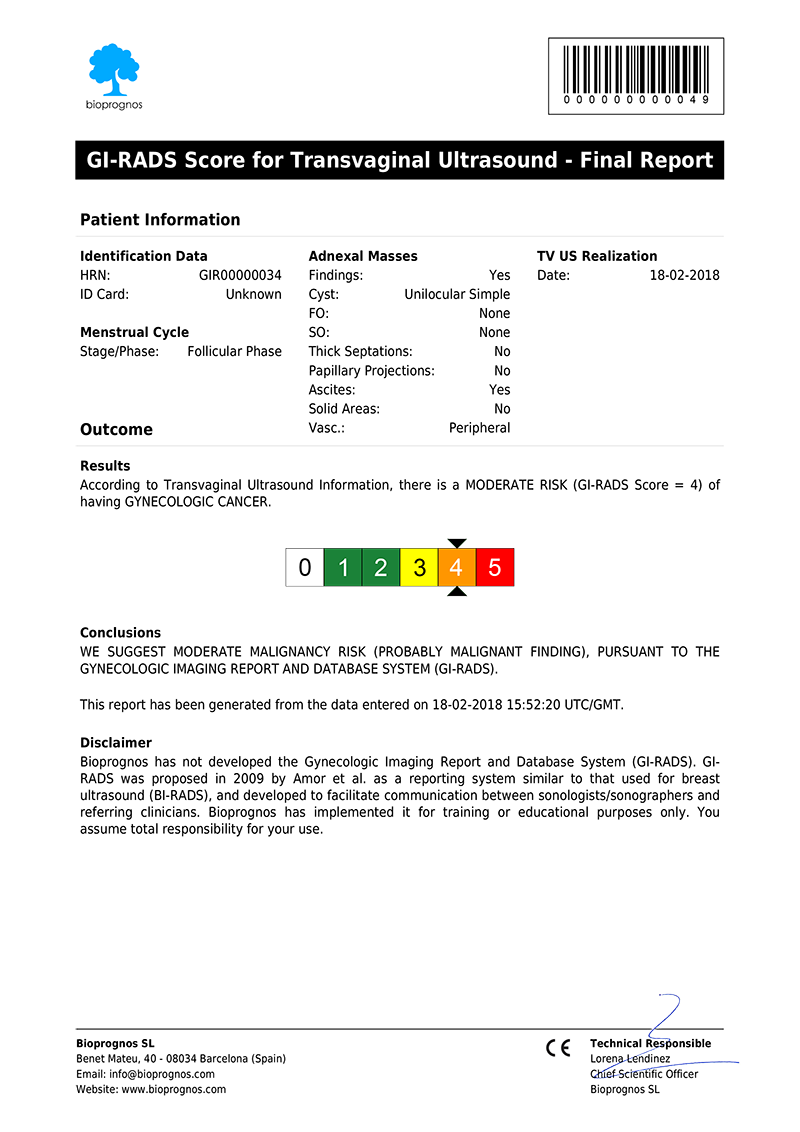GI-RADS for Transvaginal Ultrasound
Overview
Based on the Breast Imaging Reporting and Data System (BI-RADS®) classification developed by the American College of Radiology (ACR) in 1993, that classifies breast lesions effectively according to the level of suspicion for malignancy, in 2009 Amor, F. et al. suggested adapting this system to gynecologic ultrasound for the evaluation of adnexal masses, also known worldwide as Gynecologic Imaging Reporting and Data System (GI-RADS) and based on recognition patterns and criteria recommended by the International Ovarian Tumor Analysis (IOTA).
Online Tool
BIOPROGNOS has already implemented ―for training or educational purposes―, the last versions of GI-RADS for Gynecologic Cancer screening and detection. Use is free of charge and not limited.

Gynecologic Imaging Report and Database System (GI-RADS) is licensed under a Creative Commons Attribution-NonCommercial-NoDerivatives 4.0 International License.
Final Report
Once entered the patient data, our GI-RADS Score Calculator for Transvaginal Ultrasound presents the results as a PDF document, that can be downloaded or sent by email.

Click here to open it in PDF format.
The report includes all Patient Data as well as Score, calculated according last version of GI-RADS.
The Science Behind GI-RADS for Transvaginal Ultrasound
Based on Publications
- Amor, F., Alcázar, J. L., et al. (2011). GI-RADS reporting system for ultrasound evaluation of adnexal masses in clinical practice: a prospective multicenter study. Ultrasound in Obstetrics and Gynecology, 38: 450-455. DOI: 10.1002/uog.9012.
- Amor, F., Vaccaro, H., et al. (2008). Gynecologic Imaging Reporting and Data System; A new proposal for classifying Adnexal Masses on the Basis of Sonographic Findings. American Institute of Ultrasound in Medicine. Journal of Ultrasound in Medicine, 28: 285-291. PMID: 19244063.
Related Publications
- Rams, N., Muñoz, R., (2015). Resultados de la clasificación “Gynecologic Imaging reporting and Data System” para la catalogación de masas anexiales. Progresos de Obstetricia y Ginecología, 58(3): 125-129. DOI: 10.1016/j.pog.2014.11.020.
- Timmerman, D., Valentin, L., et al. (2000). Terms, definitions and measurements to describe the sonographic features of adnexal tumors: a consensus opinion from the International Ovarian Tumor Analysis (IOTA) group. Ultrasound in Obstetrics and Gynecology, 16: 500-505. DOI: 10.1046/j.1469-0705.2000.00287.x.

